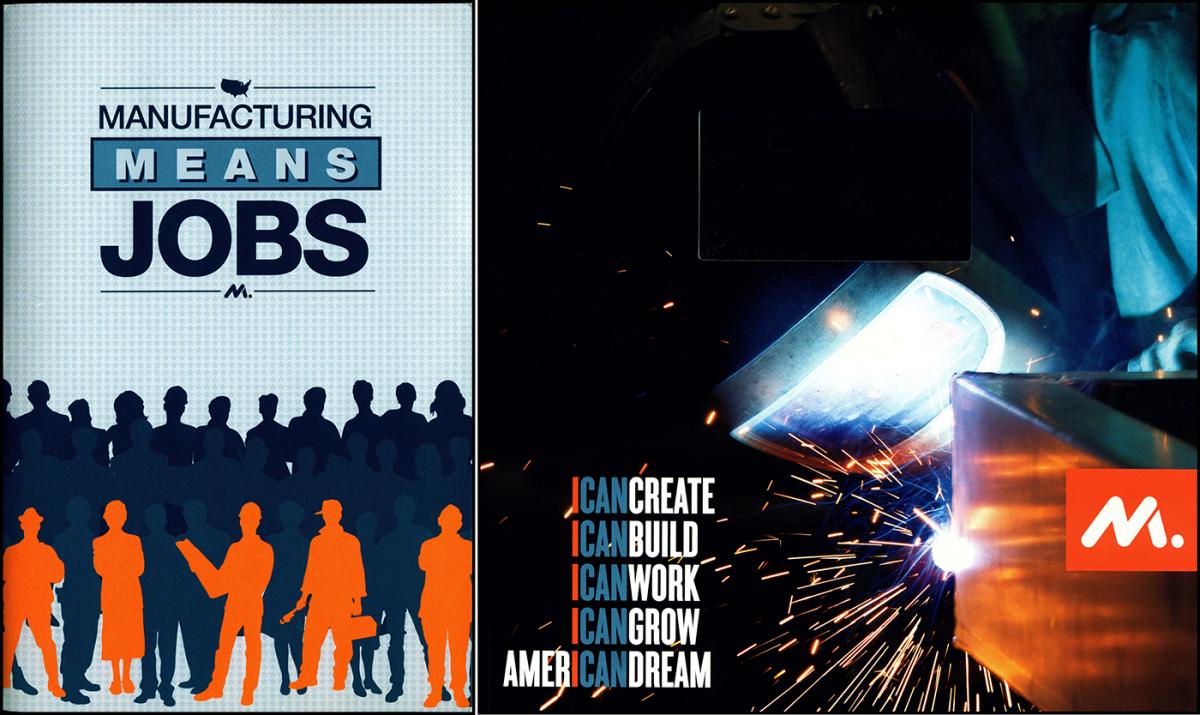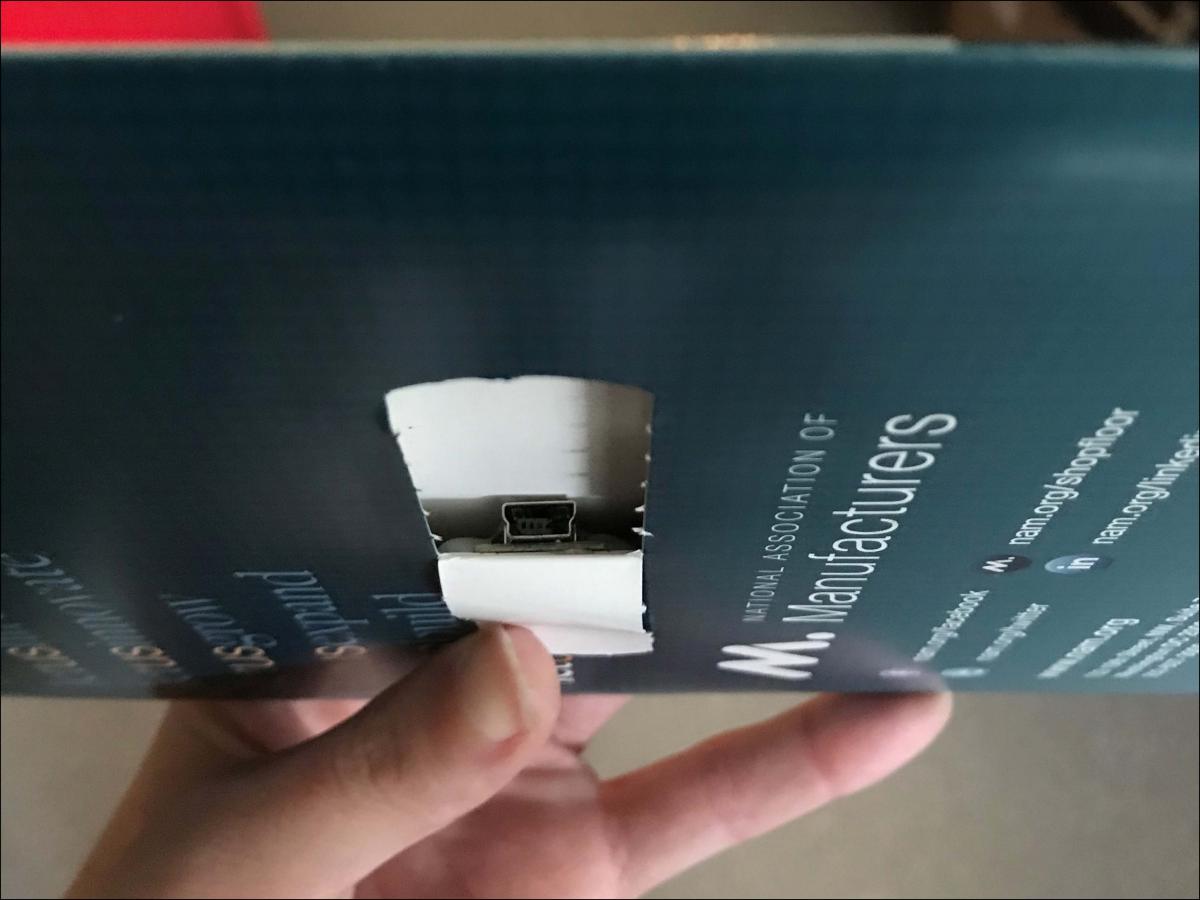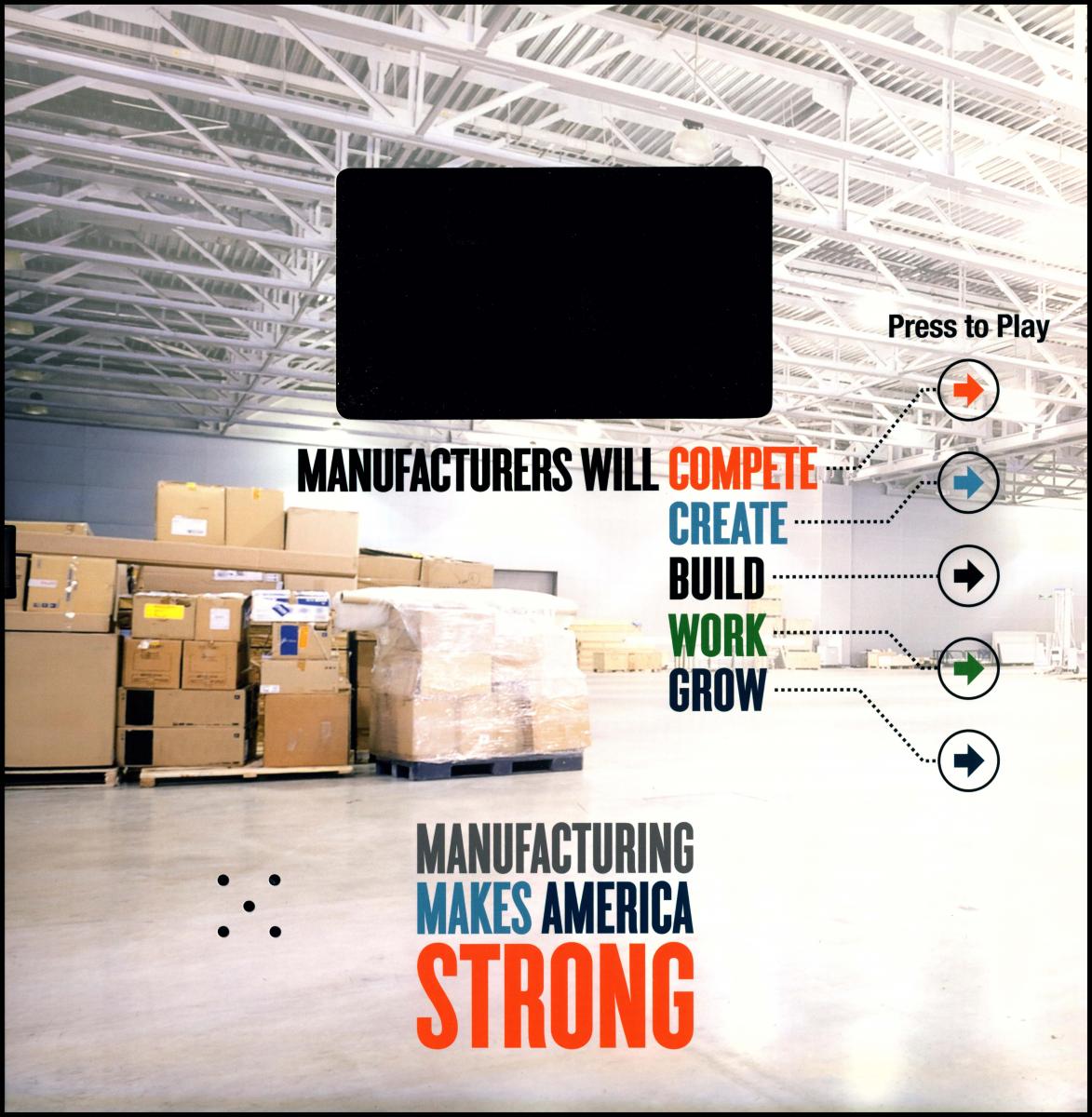Forms of advertisement have evolved over time. Billboards gained popularity with the rise of automobiles; the first television advertisement debuted in 1941 before a baseball game; and the internet has undeniably changed advertising. For NAM, it has utilized various formats during its existence to convey its message. From billboards in the 1930s and 1940s to the 15-minute Industry on Parade television program in the 1950s and 1960s. In the 21st century, the organization has worked with a new dynamic form of promotion: video books.
Working with Americhip, NAM created two video books for distribution. These books were “an important education tool to be left with politicians during an annual manufacturing conference.” (1) The “video in print” technology integrates text with video, providing a new experience for viewers.

These books present a unique challenge from an archival standpoint. They combine text with a digital visual component that is powered by a battery. What happens if the battery leaks? What is the best way to store these items? Is it possible to get a copy of the electronic data without destroying the rest of the object?
These are among the questions I brought to Laurie Sather, Hagley's audiovisual and digital archivist, along with wondering if she had ever seen an item like this before. She had not, and these two video books introduced us to a new format. After communicating with someone from Americhip, we learned that there is a micro USB port we can use to retrieve the digital information and preserve a copy, without destroying the larger item. The books do not need special storage, like film does, but can be stored in the climate-controlled stacks like the bulk of the material.

Inside each book is some text, but the focus is on the interactive videos. Viewers can select from five different video segments. Each segment features images from NAM members and interviews. The video clips provide quick but direct points. In the image below, the five different video segments illustrate how manufacturers will compete, create, build, work, and grow.

(1) “National Association of Manufacturers Educational Video Book,” Americhip, https://www.americhip.com/media/pdf/casestudy/national-association-of-m… (accessed 1 September 2018).
Ashley Williams is the project archivist for the NAM Collection at Hagley Museum and Library.
